















Kenya's Annual Rhino Charge Raises Record $1.4M for Conservation |
|---|
 Topics: Rhino Charge
Topics: Rhino Charge
|
Jill Craig, VOA News
1 June 2016
|
Download Kenya’s Annual ‘Rhino Charge’ Raises Record $1.4 Million for Conservation in MP4 format - 75.7MB - 2:41 Kenya's annual Rhino Charge competition brings off-road vehicles and their teams to a remote region of the country to find out who can tackle the most inhospitable terrain in the course of a day. The teams raise money to participate, and the funds go toward nature conservation efforts. 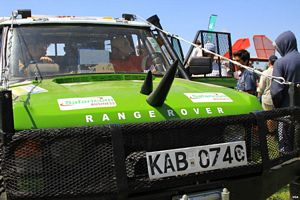 A charge car decked out with rhino horns gets ready to participate in the 28th annual Rhino Charge, held this year in the rocky terrain of Narok county, Kenya, May 29, 2016. The event began in 1989, through the Rhino Ark charitable trust, to raise money for the conservation of the Aberdares mountain ecosystem, later expanding to help Mount Kenya and the Mau Forests Complex. (J. Craig/VOA) A charge car decked out with rhino horns gets ready to participate in the 28th annual Rhino Charge, held this year in the rocky terrain of Narok county, Kenya, May 29, 2016. The event began in 1989, through the Rhino Ark charitable trust, to raise money for the conservation of the Aberdares mountain ecosystem, later expanding to help Mount Kenya and the Mau Forests Complex. (J. Craig/VOA)
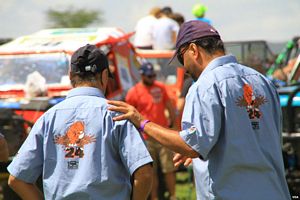 Rhino Charge competitors chat during scrutineering (or inspection of competing cars) in Narok county, Kenya, May 29, 2016. The annual event is "a big, big thing for these guys, and there's many, many a night spent in bars around Kenya, guys talking about where they went wrong and the guy who won saying how he was so good," said one of more than 200 unpaid volunteers for the Rhino Charge. (J. Craig/VOA) Rhino Charge competitors chat during scrutineering (or inspection of competing cars) in Narok county, Kenya, May 29, 2016. The annual event is "a big, big thing for these guys, and there's many, many a night spent in bars around Kenya, guys talking about where they went wrong and the guy who won saying how he was so good," said one of more than 200 unpaid volunteers for the Rhino Charge. (J. Craig/VOA)
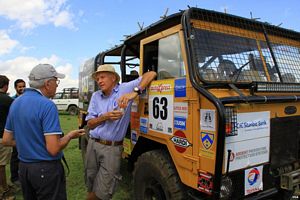 People chat at Rhino Charge as cars are inspected in Narok county, Kenya, May 29, 2016. Teams are allowed up to six people per vehicle, usually made up of a driver, a navigator and up to four runners. (J. Craig/VOA) People chat at Rhino Charge as cars are inspected in Narok county, Kenya, May 29, 2016. Teams are allowed up to six people per vehicle, usually made up of a driver, a navigator and up to four runners. (J. Craig/VOA)
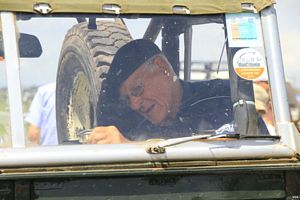 A Rhino Charge official checks cars for the event, which is held in a different remote area of Kenya each year. The location is kept secret to participants until the last minute. (J. Craig/VOA) A Rhino Charge official checks cars for the event, which is held in a different remote area of Kenya each year. The location is kept secret to participants until the last minute. (J. Craig/VOA)
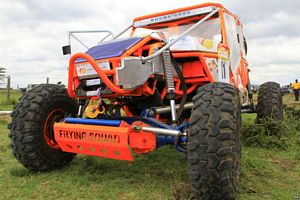 The 62 off-road "charge cars" in this year's Rhino Charge range from a stately green Land Rover to this imposing neon orange monstrosity named "Rocks' Anne." "Rocks’ Anne" was made in the U.S. state of Michigan and shipped to Kenya for the Rhino Charge. (J. Craig/VOA) The 62 off-road "charge cars" in this year's Rhino Charge range from a stately green Land Rover to this imposing neon orange monstrosity named "Rocks' Anne." "Rocks’ Anne" was made in the U.S. state of Michigan and shipped to Kenya for the Rhino Charge. (J. Craig/VOA)
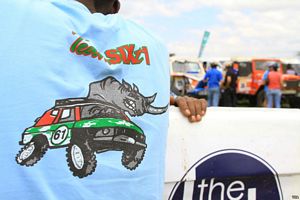 An official team T-shirt of Car 61 at Rhino Charge in Narok county, Kenya, shows a horn and the words “Not for Sale.” (J. Craig/VOA) An official team T-shirt of Car 61 at Rhino Charge in Narok county, Kenya, shows a horn and the words “Not for Sale.” (J. Craig/VOA)
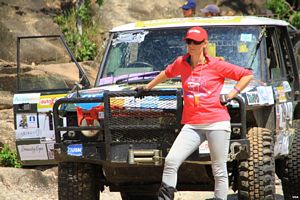 A member of Car 19, the “Bush Babes,” an all-women’s team, waits to finish the “Gauntlet,” the most difficult section of Rhino Charge, May 30, 2016. (J. Craig/VOA) A member of Car 19, the “Bush Babes,” an all-women’s team, waits to finish the “Gauntlet,” the most difficult section of Rhino Charge, May 30, 2016. (J. Craig/VOA)
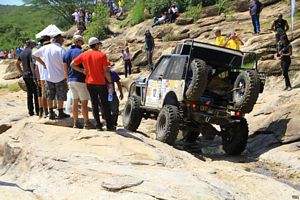 A car attempts the “Gauntlet,” the most difficult section of Rhino Charge, in Narok county, Kenya, May 30, 2016. In the annual event, speed is not the name of the game — in fact, there is a 40-kilometer per hour limit. Chargers must instead reach as many checkpoints as possible in ten hours, using the shortest distance — meaning that technical skill and luck are required in surmounting rocks, rivers, mud, and bush. (J. Craig/VOA) A car attempts the “Gauntlet,” the most difficult section of Rhino Charge, in Narok county, Kenya, May 30, 2016. In the annual event, speed is not the name of the game — in fact, there is a 40-kilometer per hour limit. Chargers must instead reach as many checkpoints as possible in ten hours, using the shortest distance — meaning that technical skill and luck are required in surmounting rocks, rivers, mud, and bush. (J. Craig/VOA)
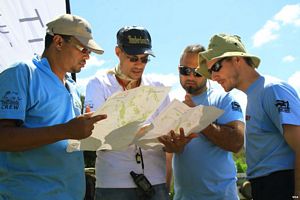 Members of Car 61 strategize at a checkpoint during Rhino Charge, in Narok county, Kenya, May 30, 2016. The evening before the competition, chargers are given GPS coordinates of 13 checkpoints to strategically map across an area of roughly 100 square kilometers of tough terrain. (J. Craig/VOA) Members of Car 61 strategize at a checkpoint during Rhino Charge, in Narok county, Kenya, May 30, 2016. The evening before the competition, chargers are given GPS coordinates of 13 checkpoints to strategically map across an area of roughly 100 square kilometers of tough terrain. (J. Craig/VOA)
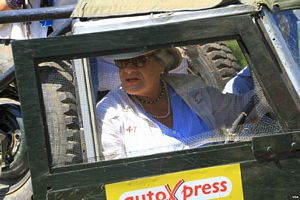 Teresa Sapieha, owner and driver of Car 47, “The Girls in Pearls” pulls into a checkpoint during Rhino Charge, May 30, 2016. Sapieha has been charging since 1994 in a now 60-year-old Land Rover. She says Rhino Charge is a challenge, it's for a good cause, and she's seen some amazing Kenyan landscapes. (J. Craig/VOA) Teresa Sapieha, owner and driver of Car 47, “The Girls in Pearls” pulls into a checkpoint during Rhino Charge, May 30, 2016. Sapieha has been charging since 1994 in a now 60-year-old Land Rover. She says Rhino Charge is a challenge, it's for a good cause, and she's seen some amazing Kenyan landscapes. (J. Craig/VOA)
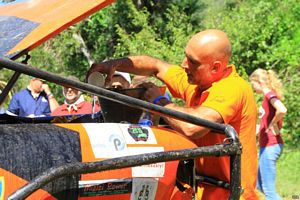 A participant attempts to fix his overheating car during Rhino Charge in Narok county, Kenya, May 30, 2016. (J. Craig/VOA) A participant attempts to fix his overheating car during Rhino Charge in Narok county, Kenya, May 30, 2016. (J. Craig/VOA)
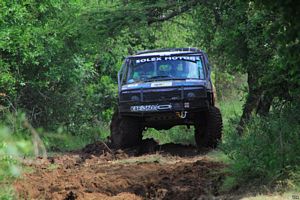 A car traverses the muddy road in the Rhino Charge in Narok county, Kenya, May 30, 2016. Every team must raise a minimum of about $10,000 to participate. This year, Rhino Ark raised a record-breaking amount of close to $1.4 million for conservation efforts, as well as about $44,000 for the local community. Winners do not receive prize money. (J. Craig/VOA) A car traverses the muddy road in the Rhino Charge in Narok county, Kenya, May 30, 2016. Every team must raise a minimum of about $10,000 to participate. This year, Rhino Ark raised a record-breaking amount of close to $1.4 million for conservation efforts, as well as about $44,000 for the local community. Winners do not receive prize money. (J. Craig/VOA)
|
